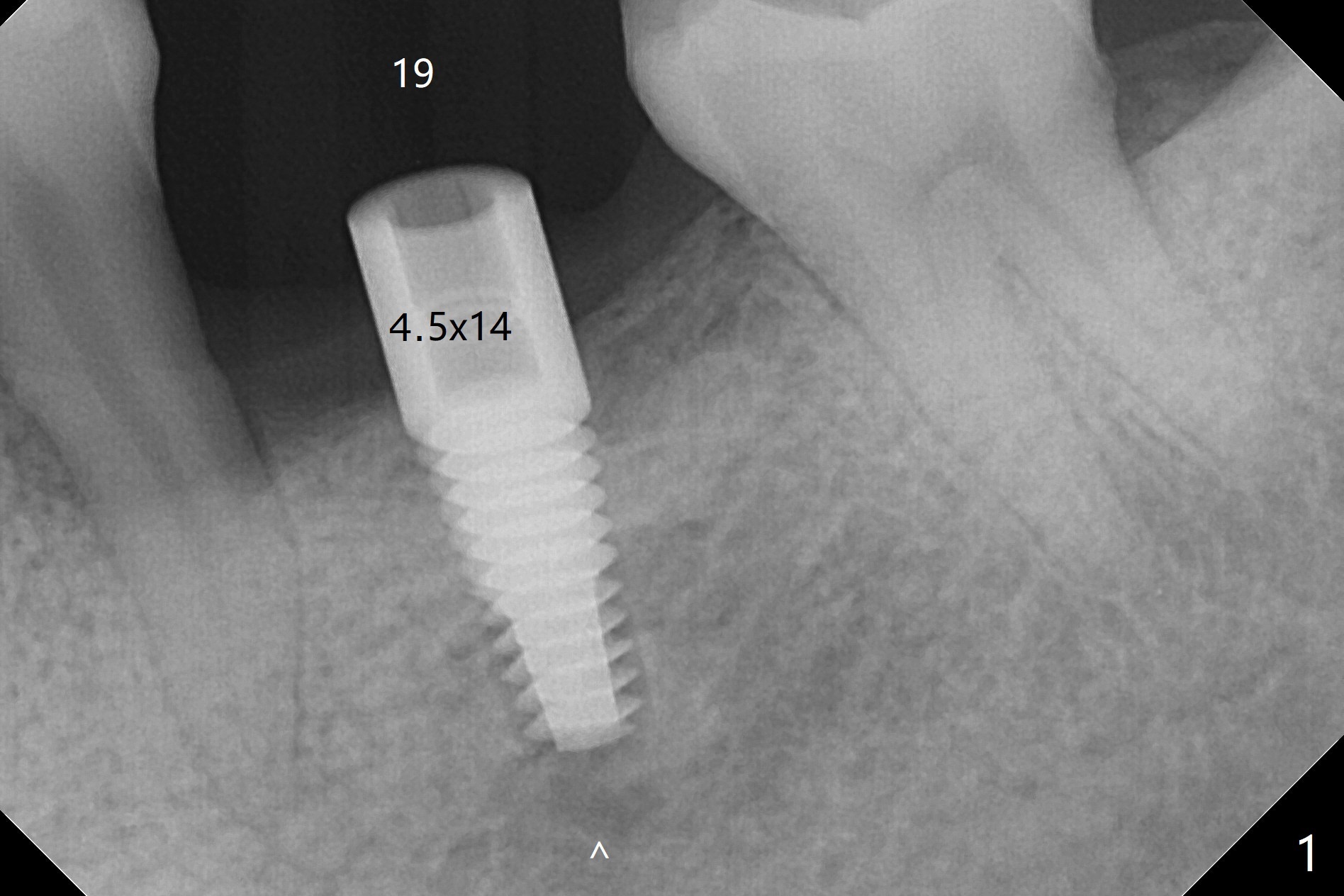
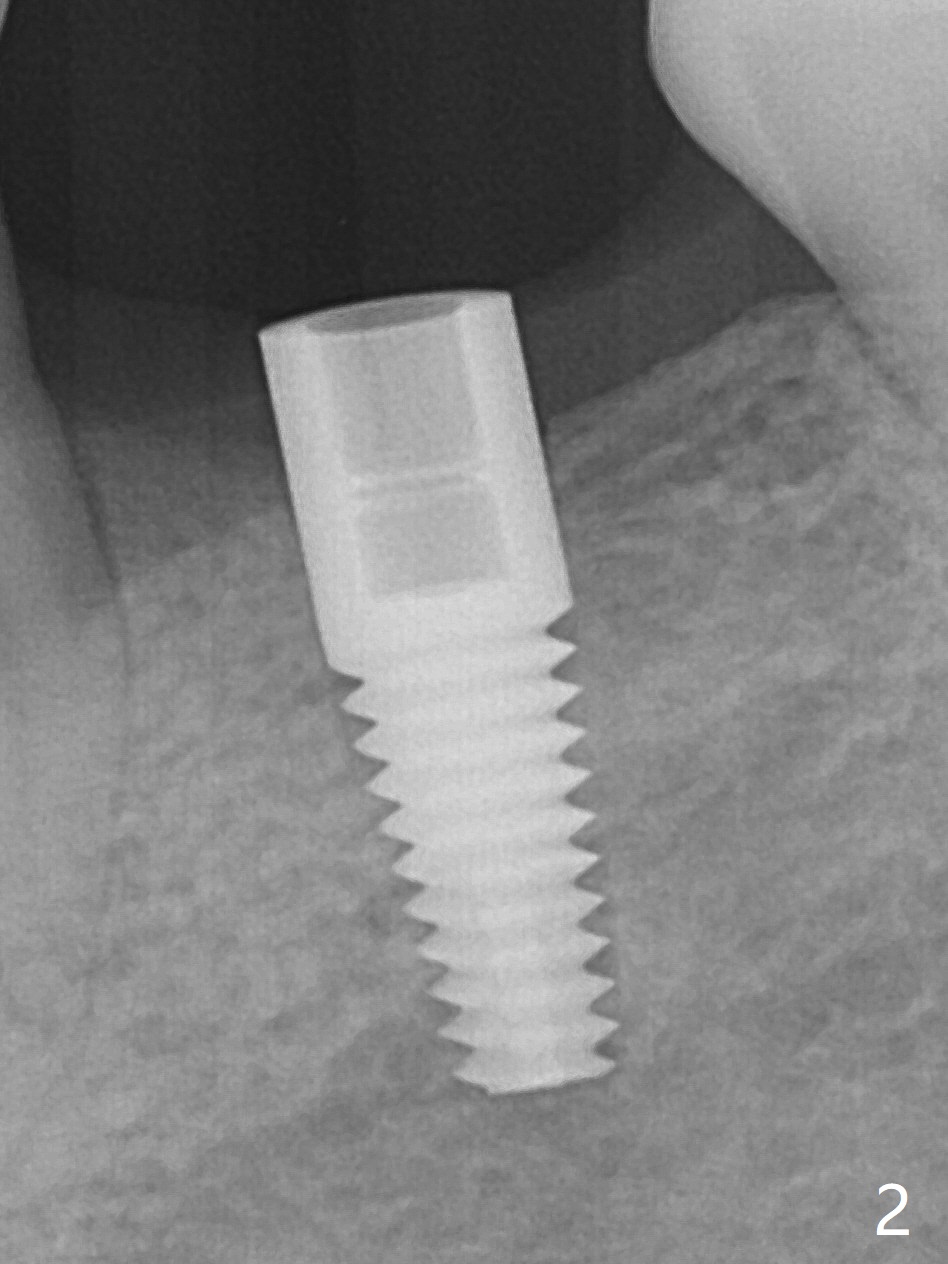
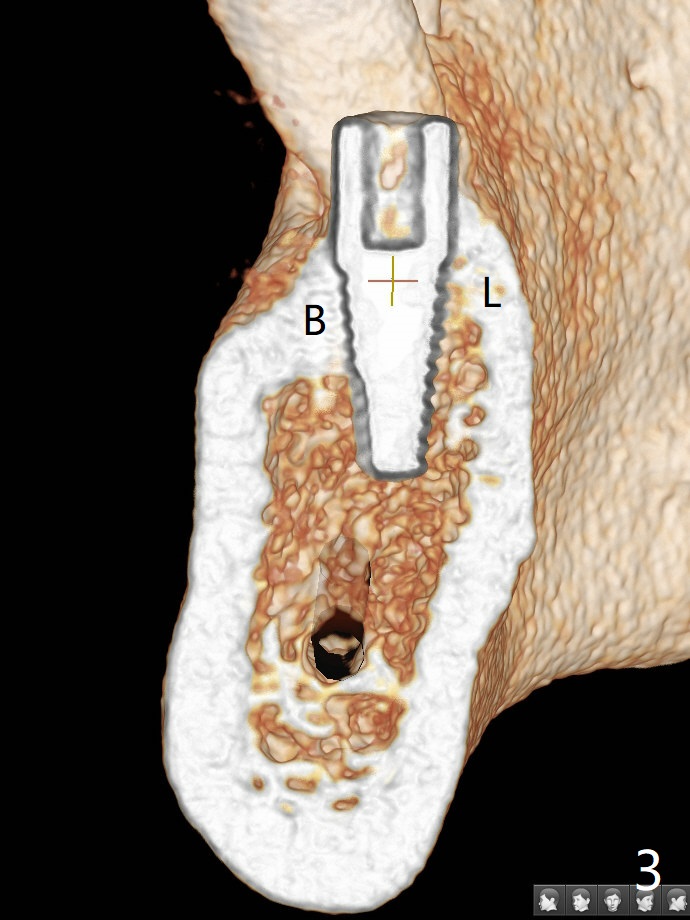
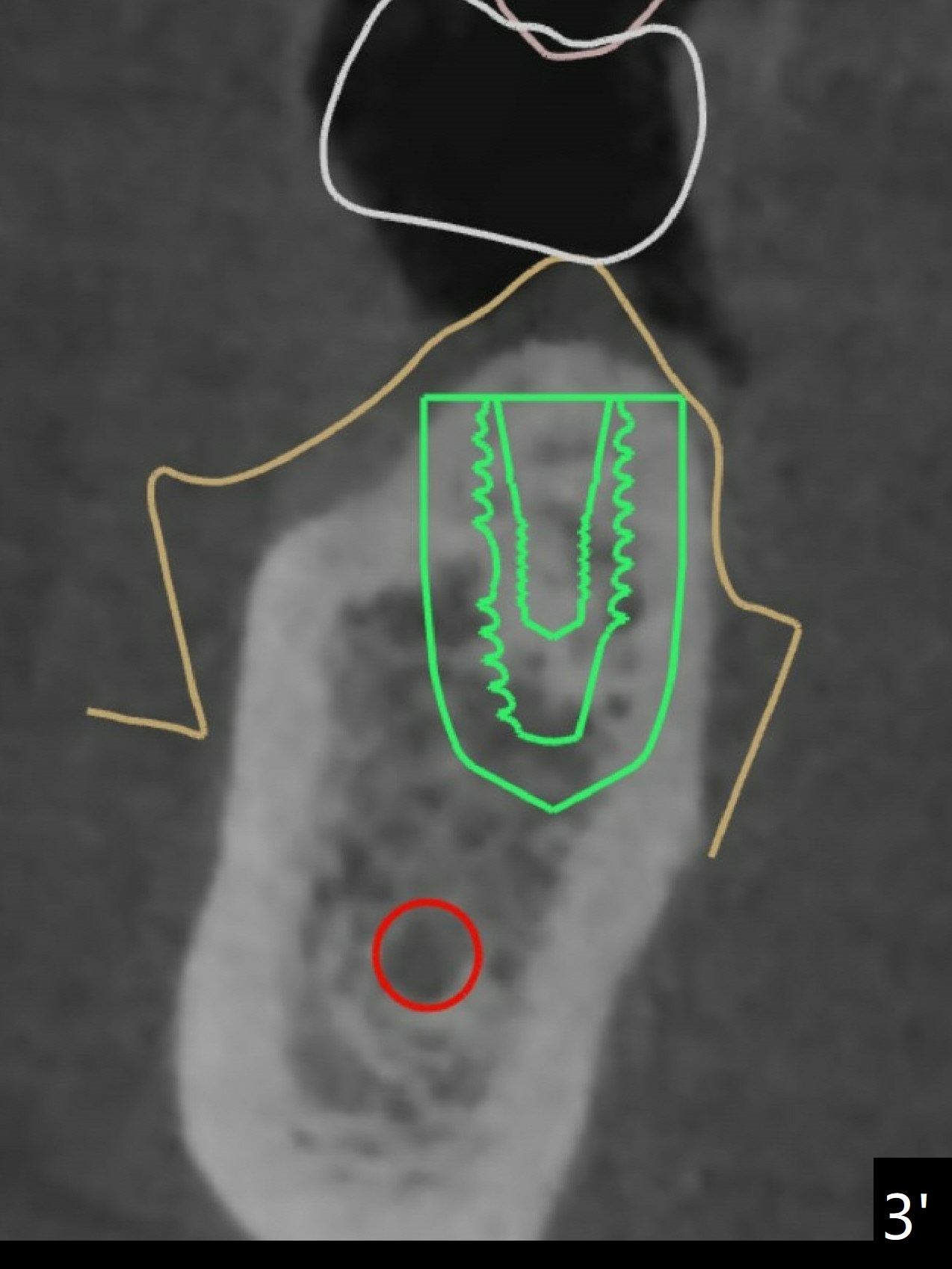
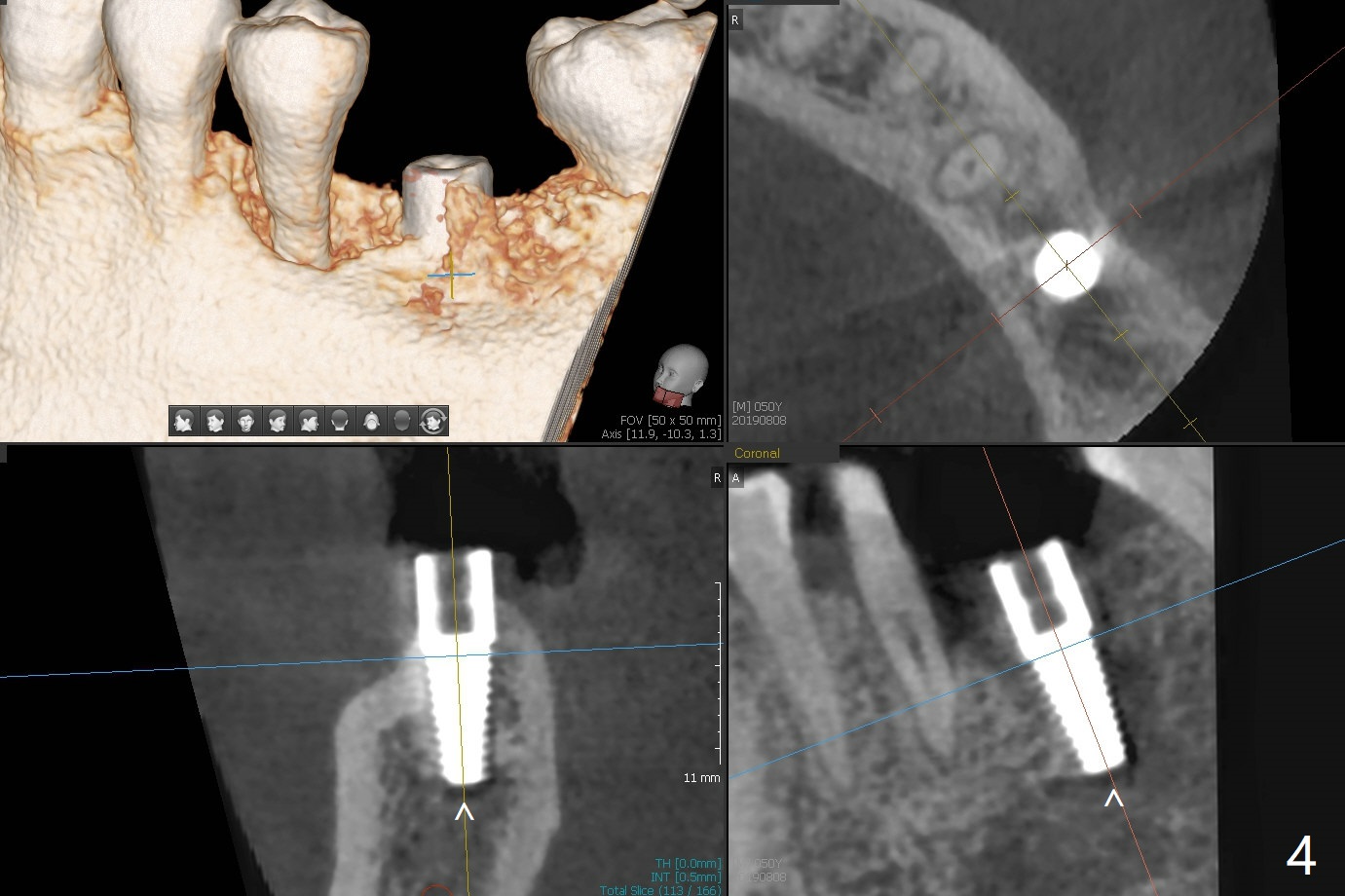
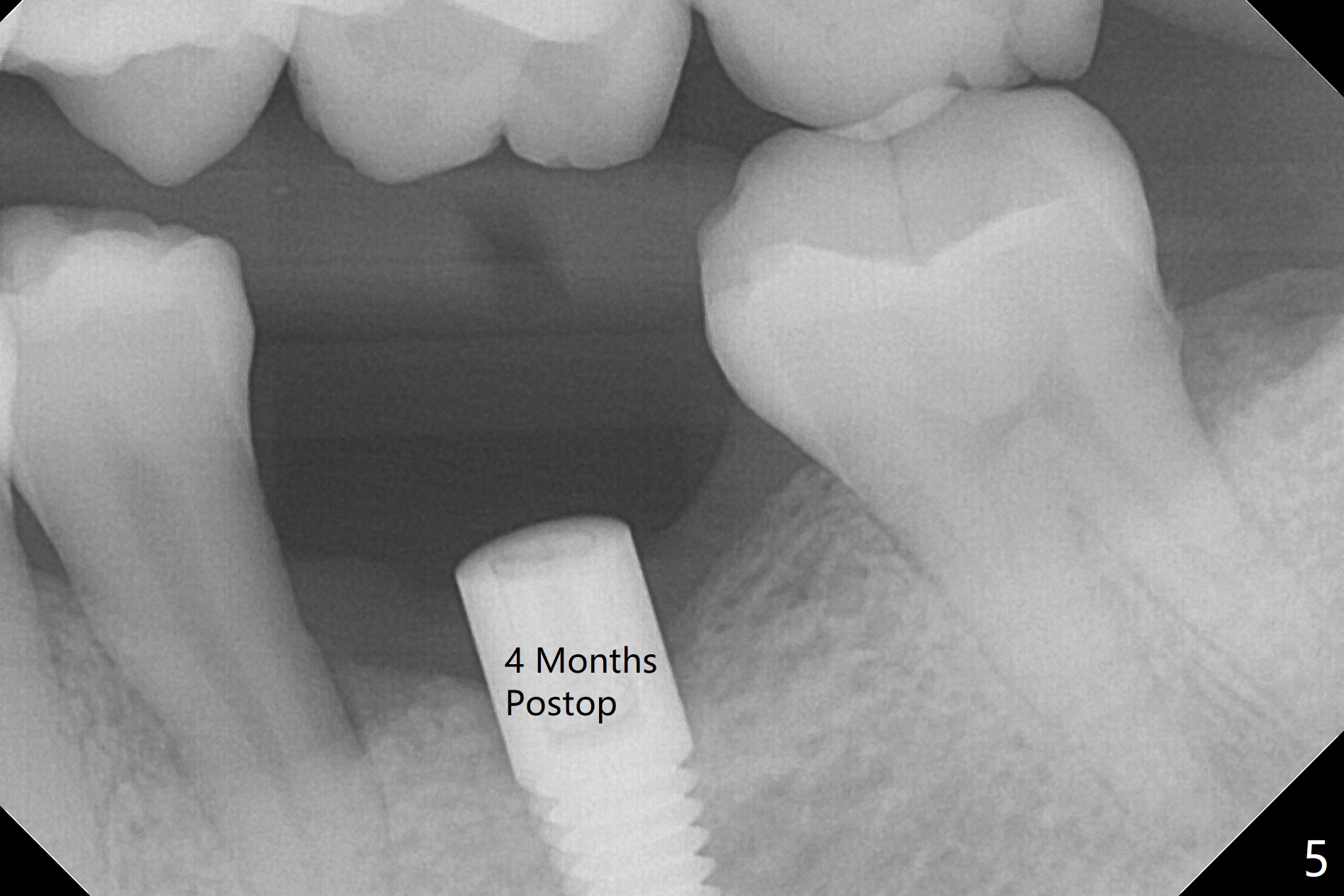
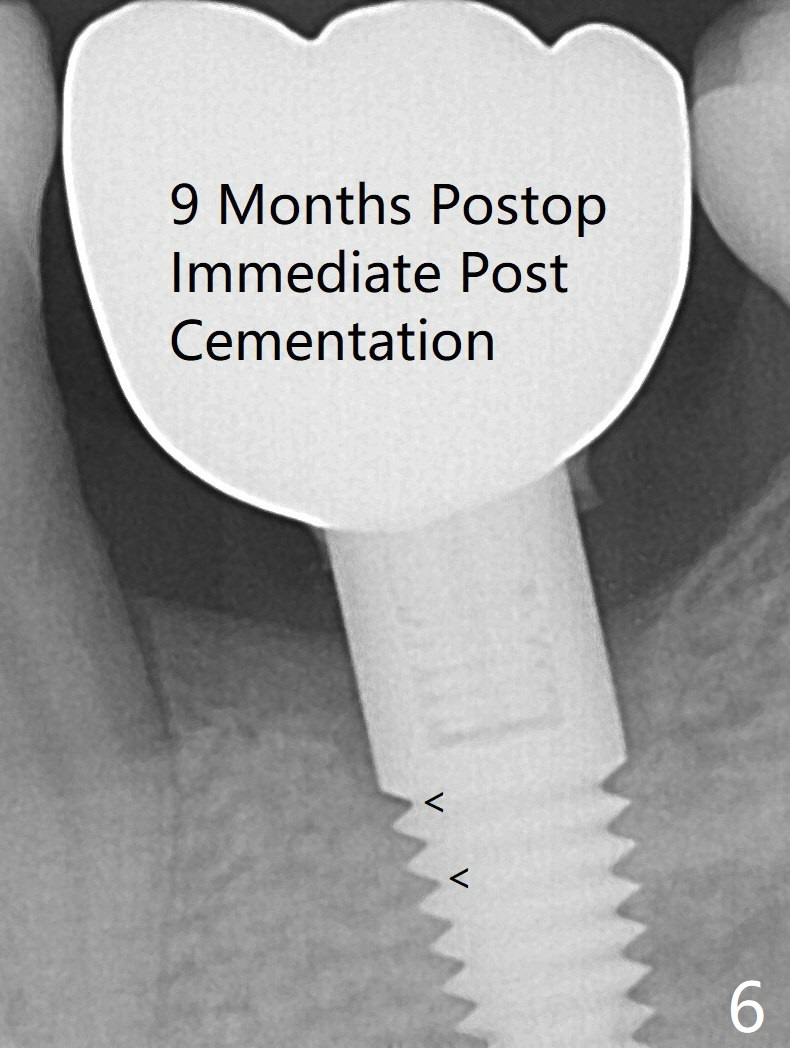
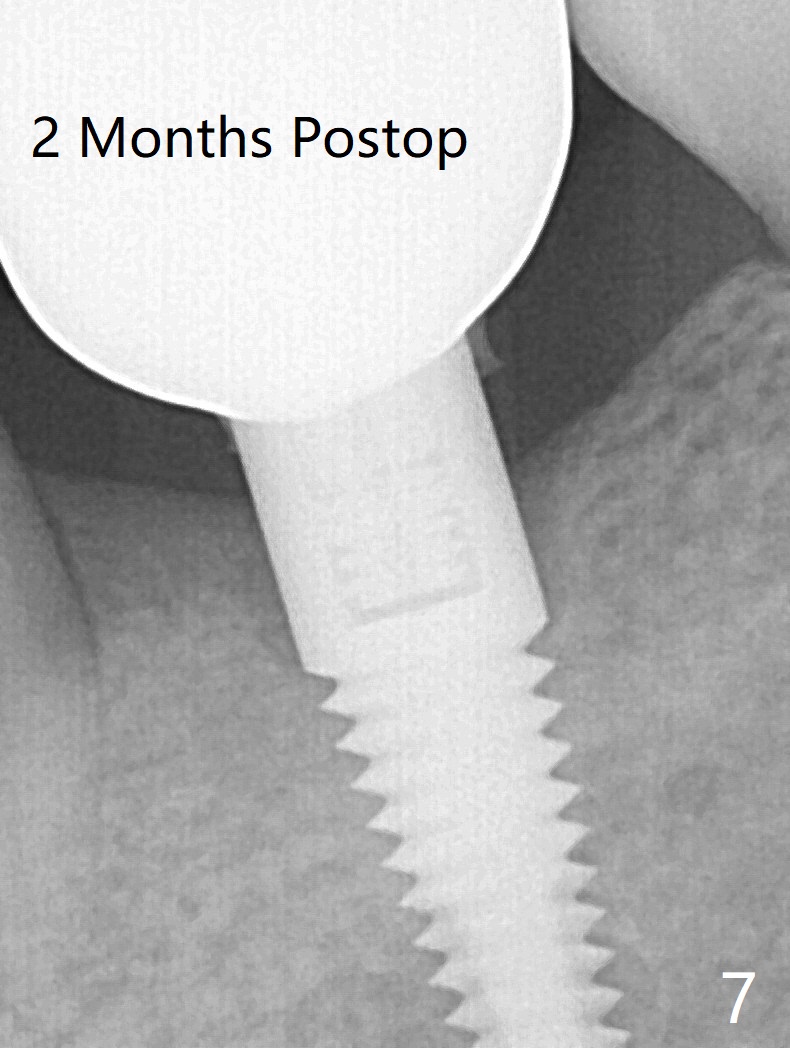
 |
  |
 |
|
 |
 |
 |
 |
Hard Bone
After 4x11.5 mm drill with 10.5 mm offset for bone-level implant at #19, a 4.5x14 mm tissue-level tapered tap is used with high torque. The same sized implant is placed in-completely with apical space (Fig.1 ^). Following reuse of the guide and 4.5x7.3 mm drill, the implant is placed deeper easily (Fig.2-4). The implant threads are subcrestal buccally (B (L: lingual plate), as compared to design in Fig.3'). Later the implant is placed a little deeper with insertion torque of 25 Ncm. There is no crestal bone loss 4 months postop (Fig.5). Waterlase is used for gingivectomy without anesthesia or burn after placing a 4x5 mm abutment. The access is difficult due to severe bone loss. There is no gap between the implant threads (osteointegration) 9 months postop/immediate post cementation (Fig.6 < (coronavirus)), although the crestal bone has lost. After cementation, the tooth #20 has no mobility; note bone loss around the root of #20 (Fig.5). In spite of the residual cement, there appears no bone loss 2 months postop (Fig.7). Instead the distal crestal bone is more organized.
Return to Lower Molar Immediate Implant, Trajectory II Waterlase Xin Wei, DDS, PhD, MS 1st edition 08/08/2019, last revision 07/07/2020